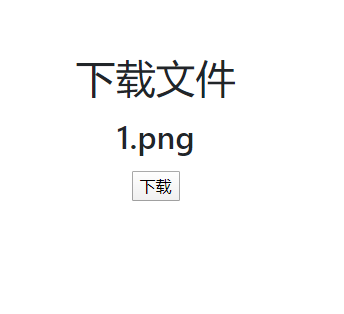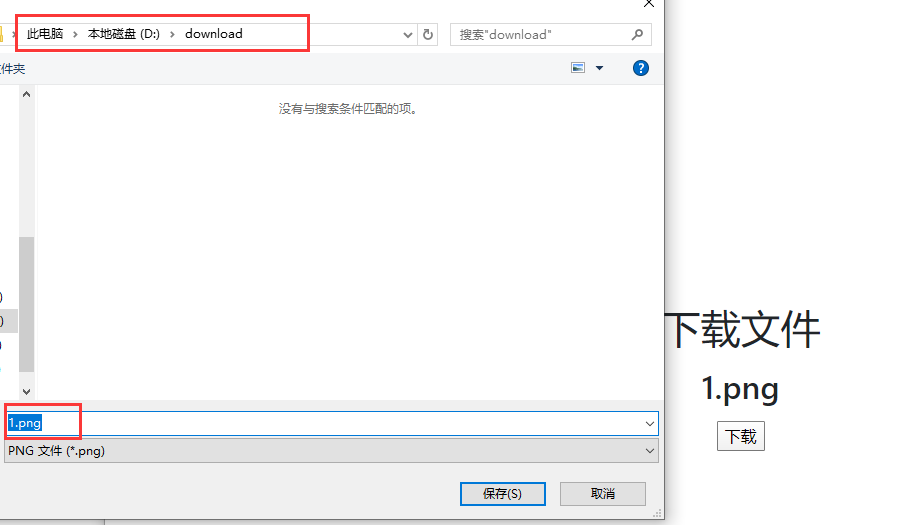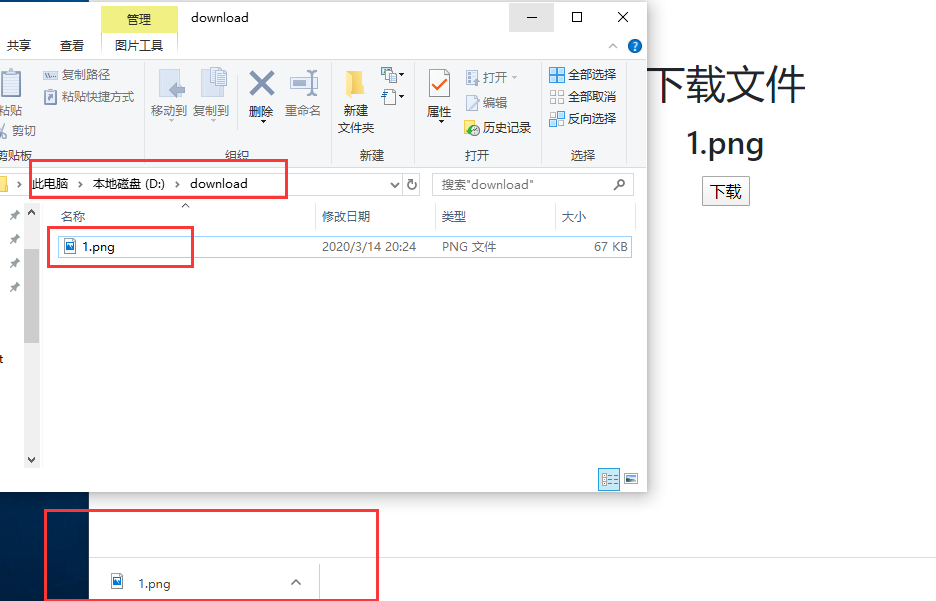上一篇博客:使用SpringBoot实现文件的上传
已经实现了文件的上传,所以紧接着就是下载
首先还是html页面的简单设计
<form class="form-signin" th:action="@{/employee/File/download}" method="post">
<p><h1>下载文件</h1></p>
<p><h2>1.png</h2></p>
<p><input type="submit" value="下载"/></p>
<p style="color: red" th:text="${result}" th:if="${not #strings.isEmpty(result)}"></p>
</form>
待下载文件名为1.png
然后写controller
package com.manager.controller.FileController;
import org.springframework.stereotype.Controller;
import org.springframework.ui.Model;
import org.springframework.web.bind.annotation.PostMapping;
import org.springframework.web.bind.annotation.RequestMapping;
import javax.servlet.http.HttpServletResponse;
import java.io.*;
@Controller
public class FileDownloadController {
@PostMapping("/employee/File/download")
public String testDownload( HttpServletResponse response ,Model model) {
//待下载文件名
String fileName = "1.png";
//设置为png格式的文件
response.setHeader("content-type", "image/png");
response.setContentType("application/octet-stream");
response.setHeader("Content-Disposition", "attachment; filename=" + fileName);
byte[] buff = new byte[1024];
//创建缓冲输入流
BufferedInputStream bis = null;
OutputStream outputStream = null;
try {
outputStream = response.getOutputStream();
//这个路径为待下载文件的路径
bis = new BufferedInputStream(new FileInputStream(new File("D:/upload/" + fileName )));
int read = bis.read(buff);
//通过while循环写入到指定了的文件夹中
while (read != -1) {
outputStream.write(buff, 0, buff.length);
outputStream.flush();
read = bis.read(buff);
}
} catch ( IOException e ) {
e.printStackTrace();
//出现异常返回给页面失败的信息
model.addAttribute("result","下载失败");
} finally {
if (bis != null) {
try {
bis.close();
} catch (IOException e) {
e.printStackTrace();
}
}
if (outputStream != null) {
try {
outputStream.close();
} catch (IOException e) {
e.printStackTrace();
}
}
}
//成功后返回成功信息
model.addAttribute("result","下载成功");
return "employee/EmployeeDownloadFile";
}
}
访问页面测试

选择下载路径,点击保存

成功下载!
